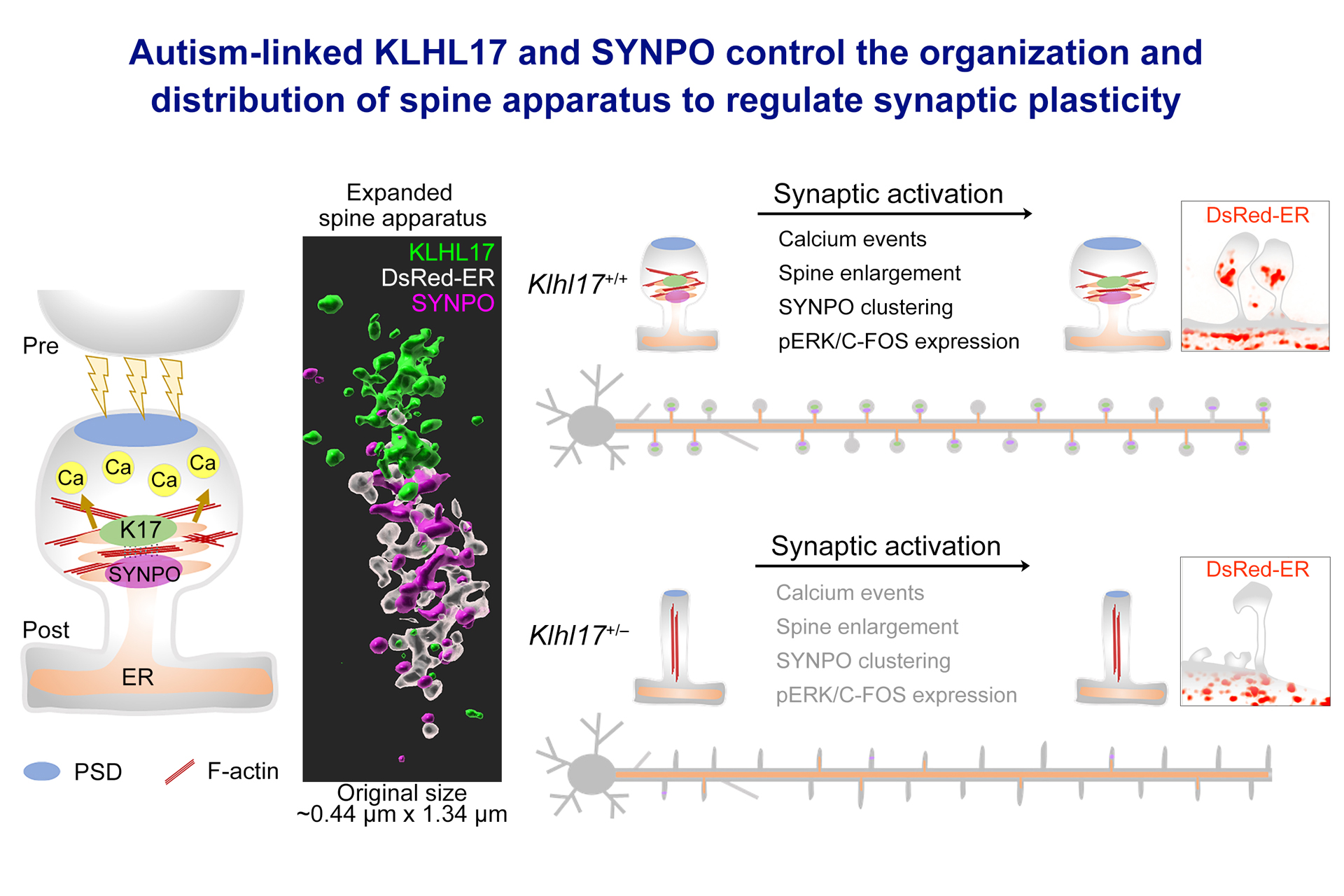A research team led by Dr. Yi-Ping Hsueh, Distinguished Research Fellow at the Institute of Molecular Biology, Academia Sinca used high-end optical microscopy and biochemical approaches to demonstrate that KLHL17 and SYNPO, two autism-linked proteins, act in concert to regulate the organization and distribution of the spine apparatus, a specialized endoplasmic reticulum structure at excitatory synapses. KLHL17 and SYNPO promote clustering of the spine apparatus in the excitatory synapse to regulate calcium dynamics and consequently influence neuronal plasticity and activation. Furthermore, via collaboration with Dr. Bi-Chang Chen, Associate Research Fellow at the Research Center of Applied Sciences, they applied an improved expansion microscopy technology to successfully observe the three-dimensional ultrastructure and organization of the spine apparatus, as well as of the KLHL17 and SYNPO proteins, with an ultra-resolution of nearly 30 nanometers. Their research clearly links the function of the spine apparatus to ASD via control of synaptic plasticity. This study has been published in the journal PLOS Biology (August 2023).
Article link: https://journals.plos.org/plosbiology/article?id=10.1371/journal.pbio.3002274
Related link: https://www.imb.sinica.edu.tw/ch/research/publication_show.php?pid=244

